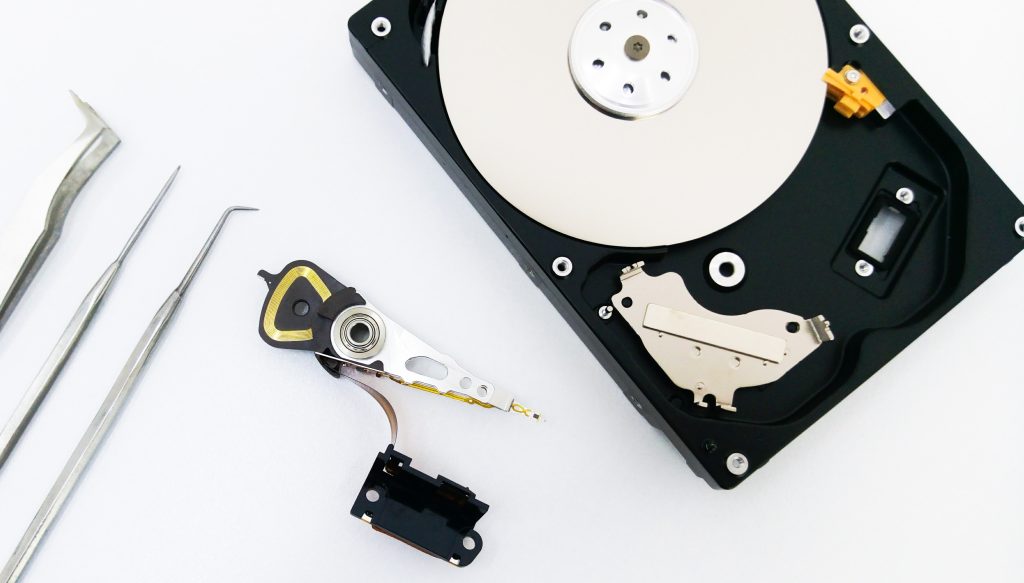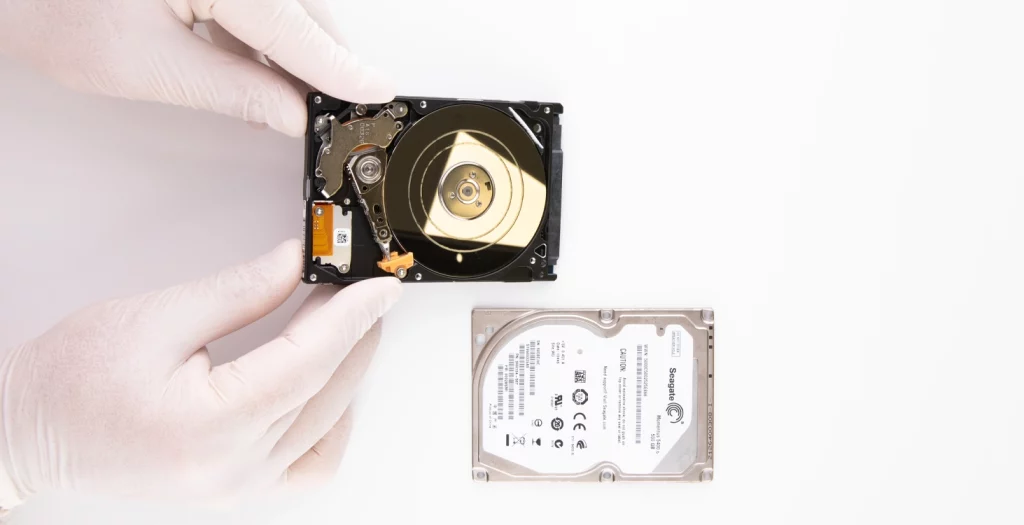In this day and age, data has become an integral part of our daily lives. Businesses, as well as individuals, rely on the information stored electronically for their operations. Unfortunately, there might come a time when these records are no longer necessary; hence it is essential to discard them securely and responsibly.
When a computer user decides to delete the file, he can tap the “delete” button or drag it to the recycle bin or trash can. Still, this process does not erase the data completely but makes it unseen. Users can not access deleted data because it is not visible, but it is still stored somewhere on the media storage device.
Where Do Deleted Files Go?
The deletion process is very tricky, primarily because of the fact that it does not delete the files from your device. The system makes files inaccessible by destroying the path to find them.
Operating systems use so-called “pointers” to track where files are stored on a hard drive. Thus, each document of your hard drive has a pointer, which helps the system to find and open it.
However, when a “file deletion” process occurs, the operating system removes the pointer, showing the sector where the data was stored as available. From the user’s point of view, the file no longer exists on the hard drive. Still, it is stored on the device’s sectors unless it is overwritten by other data.
Based on this factor, the data can be recovered after deletion. Or, it can also be completely erased from the storage device.
Data deletion is not always an intentional process. Due to human error, an accidental file deletion may occur, leading to severe issues for its users. However, as we mentioned before, deleted data is still stored somewhere on the hard drive, making the restoration possible.
When an unintentional deletion occurs, users react differently. Mostly, people try to find fast and efficient solutions on the Internet to save lost videos, photos, documents, or other file types. Many free recovery tools scan the device and recover files stored in “free” space.

However, these programs are very risky, and with all the good, they can also bring all the bad. Data recovery software often overwrites lost data, making the restoration process completely impossible.
Hence, it is always better to entrust your device and essential files to engineers with years of experience. But for a recovery company to restore files that were accidentally deleted successfully, there are several steps a user should go through.
After performing actions to save your essential files from subsequent overwriting and corruption, PITS Global Data Recovery Services engineers can quickly help you with lost data. Our skilled experts have successfully worked with all types of storage devices, operating systems, and file types.
You can get more detailed information regarding our data recovery services by calling the PITS Global Data Recovery Services support team line.
Where Do Files Go When Deleted From Recycle Bin?
When a file is deleted from the Recycle Bin on a Windows computer, the file is not immediately removed from the hard drive. Instead, the operating system marks the space occupied by the deleted file as “available for use” by other data. This means that the space is essentially “empty” and can be overwritten by new data at any time.
Until that space is overwritten by new data, it is possible to recover the deleted file using data recovery software. Data recovery software can scan the hard drive for any remnants of the deleted file and restore it to a usable state.
It’s important to note that the longer you wait to attempt data recovery, the higher the chances that the space previously occupied by the deleted file will be overwritten. This can make it more difficult, if not impossible, to recover the deleted file.
Permanently Deleting Data
Completely deleting data from the storage device is one of the goals before selling, recycling, and disposing. However, formatting the drive may not be enough, as media appliances require a professional approach for a complete deletion process.
You can eliminate data by using various techniques depending on the type of the device, but destruction software is not one of them.
Users often look for a format utility that overwrites the data to make the files’ inaccessibility fast and cost-free. Nevertheless, this method does not guarantee that the information will become completely inaccessible.
Many companies may also offer a secure deletion service where your information is completely removed from a device before being disposed of.

Professional disposal services are necessary to efficiently and securely get rid of unneeded data.
Experienced engineers of PITS Global Data Recovery Services destroy sensitive data using state-of-the-art technologies and advanced equipment. Our expert team tailors services based on your needs and achieve incredible results by completely erasing your data from the device. We examine the device and data in detail until no files are left to be restored.
For more information about our data destruction and media disposal service, call us or submit a request form. Our dedicated customer service will get back to you at the earliest opportunity.
Frequently Asked Questions
Where do files go after deletion?
When files are deleted from your computer or storage device, they are typically not immediately removed from the system. Instead, they are moved to the recycle bin (Windows) or trash (Mac) folder, where they can be easily restored if needed. However, deleting files from the recycle bin or emptying the trash folder will permanently remove them from the visible file system.
Can deleted files be recovered?
In many cases, deleted files can be recovered, especially if they have not been overwritten by new data. There are various data recovery tools and techniques available that can scan the storage device and attempt to recover deleted files. However, it is important to note that the success of file recovery depends on factors such as the file system, the length of time since deletion, and any subsequent data writes on the storage device.
Are deleted files completely erased from the storage device?
When files are deleted, the operating system marks the space occupied by those files as available for reuse. Until new data is written to those sectors, the original file contents may still reside on the storage device. This means that with specialized data recovery methods, it may be possible to retrieve deleted files even after they have been removed from the recycle bin or trash folder.
How can I ensure complete file deletion?
To ensure complete file deletion and minimize the chances of recovery, you can use secure deletion methods. These methods involve overwriting the storage space previously occupied by the file with random data, making it significantly more challenging or virtually impossible to recover the original content. Secure deletion tools and software are available that offer various algorithms for effective data erasure.
Can files be recovered from formatted drives?
Formatting a drive erases the file system information, making the drive appear empty. However, the actual data may still be present on the drive until it is overwritten. Data recovery techniques can sometimes recover files from formatted drives, especially if the formatting process was quick or incomplete. It is crucial to stop using the formatted drive and seek professional data recovery services promptly for the best chance of recovering lost files.
Are there any exceptions where file recovery is not possible?
In certain cases, file recovery may not be possible. For example, if the storage device has undergone secure erasure methods or if the file contents have been overwritten by new data, the original files may be permanently unrecoverable. Additionally, physical damage to the storage device or logical issues that affect data integrity can limit or prevent successful file recovery.


